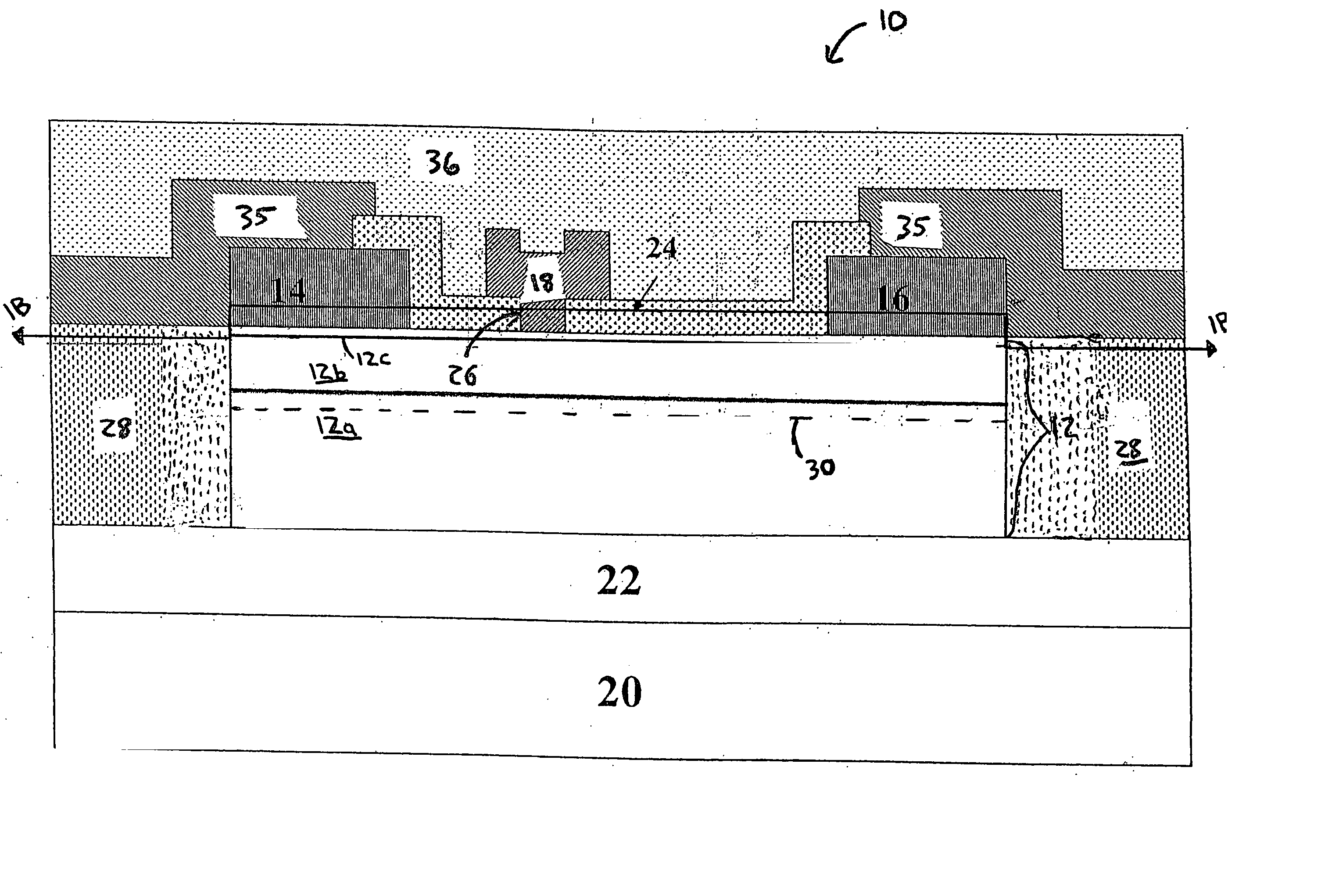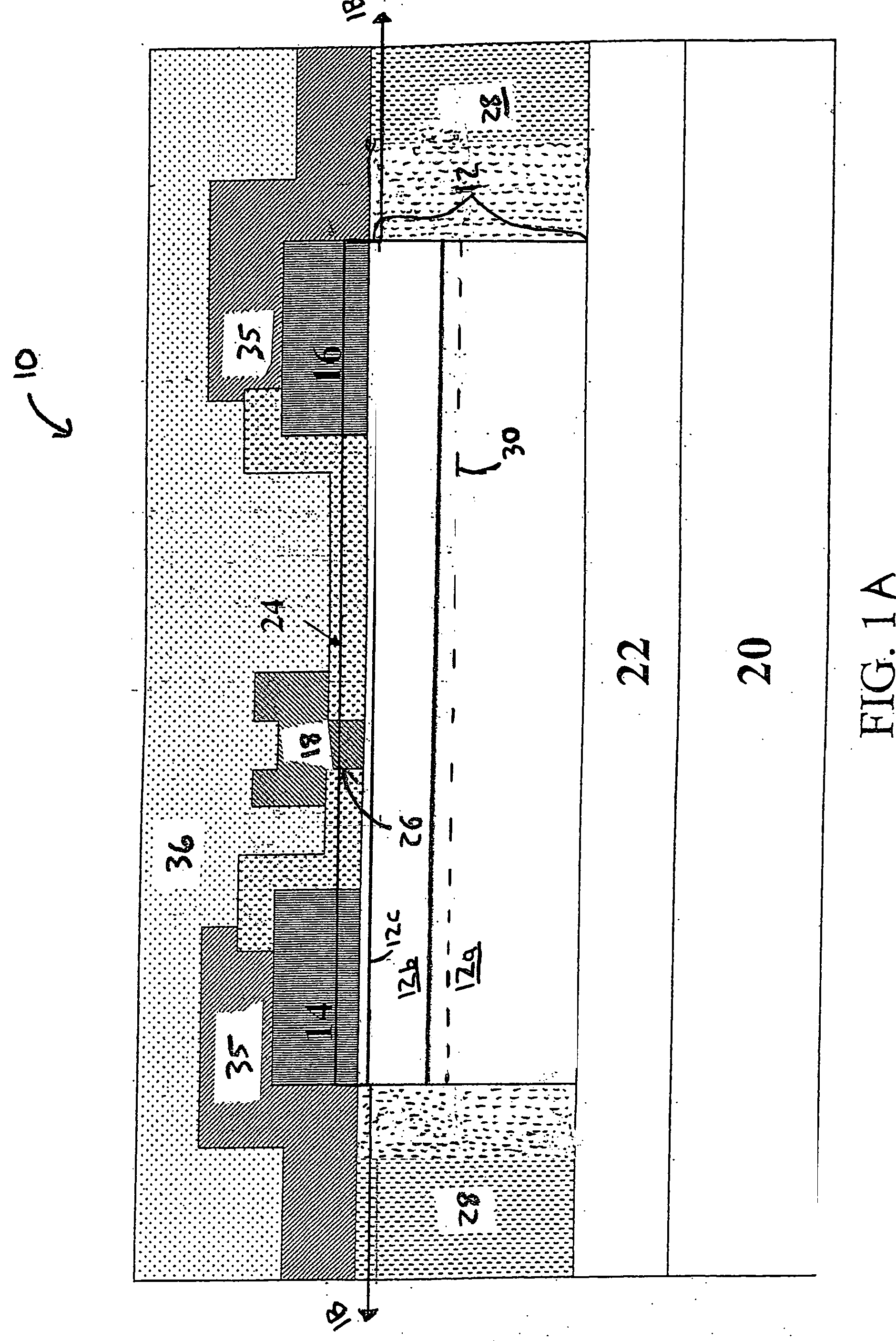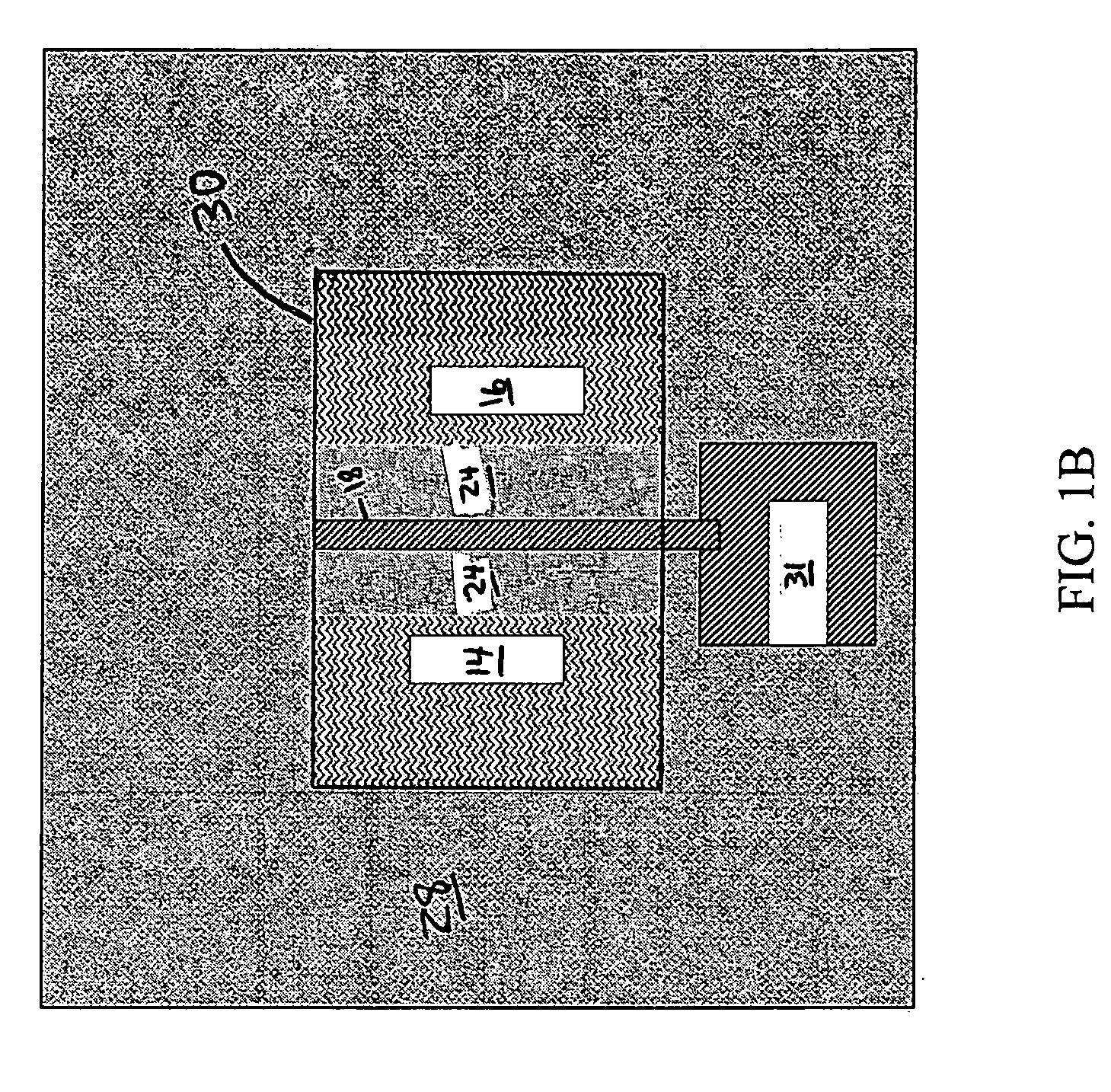Gallium nitride material structures including isolation regions and methods
- Summary
- Abstract
- Description
- Claims
- Application Information
AI Technical Summary
Benefits of technology
Problems solved by technology
Method used
Image
Examples
example 1
[0093] This example describes production and characterization of HFET devices that include a gallium nitride material device region. An isolation region is formed in the gallium nitride material region.
[0094] All structural layers in this example were grown by MOCVD using conventional precursors in a cold-wall, rotating disc reactor designed from flow dynamic simulations. The process used high-resistivity 100 mm Si (111) wafers as substrates. An aluminum nitride layer having a thickness of about 400 nm was grown on the surface of the substrate. It is believed that a very thin (e.g., about 20 Angstroms) amorphous silicon nitride layer may be formed between the aluminum nitride layer and the silicon substrate.. A compositionally graded AlxGa(1−x)N transition layer was grown on the aluminum nitride layer with the value of x decreasing across from a back surface of the transition layer to a front surface of the transition layer. A UID gallium nitride (i.e., GaN) buffer layer was grown ...
example 2
[0110] This example compares interdevice isolation current of gallium nitride material-based structures that include isolation regions of the invention to gallium nitride material-based structures that are mesa-etched for isolation. The isolation current is the current between two structures (e.g., ohmic electrodes) separated by an isolation region. Also, the effect of a SiNx passivating layer on isolation current in these structures is investigated.
[0111] Gallium nitride material-based structures were produced similar to those described in Example 1 through the ohmic metallization and rapid thermal annealing steps.
[0112] A first set of structures was processed using a mesa etching isolation process. Mesa-etched structures were produced by ICP dry etching in a BCl3 / Cl2 / Ar chemistry with a gas ratio of 8:32:10. The RF and ICP powers were 40W and 100W, respectively, and the chamber was maintained at 5 mTorr during the etch process. This recipe has been controlled to produce a smooth...
example 3
[0120] This example compares properties of gallium nitride material-based HFET devices including mesa-etched structures before, and after, an implantation step that forms an isolation region.
[0121] Gallium nitride material-based HFET structures (2×0.7 micron×50 micron) including mesa-etched isolation regions were produced, using techniques similar to those described in Example 2. HFET device fabrication then proceeded through ohmic metallization and rapid thermal annealing, gate metallization, contact pad metallization, then SiNx passivation. After passivation, leakage current of the HFET structures was characterized by current-voltage techniques. The source electrode was grounded and the gate was biased in “hard pinch-off” at −8 V. The drain voltage (Vds) was swept from 0 V to positive voltage and source, gate, and drain leakage currents were monitored as a function of Vds.
[0122] After current-voltage data were collected, the active region of the device was covered with a photore...
PUM
 Login to View More
Login to View More Abstract
Description
Claims
Application Information
 Login to View More
Login to View More - R&D
- Intellectual Property
- Life Sciences
- Materials
- Tech Scout
- Unparalleled Data Quality
- Higher Quality Content
- 60% Fewer Hallucinations
Browse by: Latest US Patents, China's latest patents, Technical Efficacy Thesaurus, Application Domain, Technology Topic, Popular Technical Reports.
© 2025 PatSnap. All rights reserved.Legal|Privacy policy|Modern Slavery Act Transparency Statement|Sitemap|About US| Contact US: help@patsnap.com



